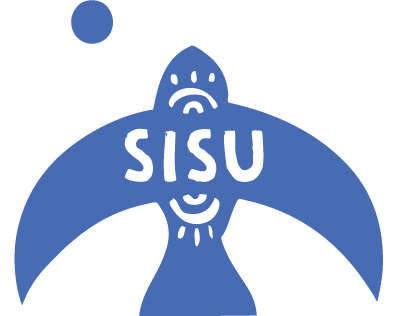Issue 6: Making Waves
Heal Thyself
April 15, 2020

Tips for Self Touch
By Samantha Romanowski | @smilingsamantha
Artwork by Latasha Dunston | @jitterbug_art
Do you want to feel better? Yep, me too. Do you overdo it on the daily or stress yourself out trying to do it all? Yep, me too. I’m still figuring out how to take care of myself, both physically and mentally. How about you?
Let’s start with self-care. Taking care of yourself isn’t about treating yourself to a once a month event like a pedicure or spa treatment where someone else does something to or for you. (That’s why I no longer use the term self-care.) Self-care is actually healthcare. It’s about you creating a habit that helps you feel better, which can mean feeling less pain, sleeping better, or managing your stress so you don’t wear yourself out.
There are plenty of ways that you already take care of yourself: eating vegetables, drinking water, having fun, spending time with loved ones, or maybe you foam roll or journal. Yay! Great job. As a bodyworker, I believe that touch is essential to our well-being and health. As a Chinese Medicine practitioner, I’ve learned that there are specific energetic points on the body that, when activated, can help us feel better. Enter Acupressure!
Acupressure is a form of massage that you can perform on yourself (or others, haaaayyyy) by applying pressure to certain parts of the body. This pressure encourages the energy, or Qi (pronounced chee), to flow harmoniously through our energetic channels, restoring the body to its natural balanced state. It’s super easy and you can do it as many times throughout the day as you’d like.
Here’s how it works:
- Apply gentle pressure to the point for a few seconds, then increase to moderate pressure for about a minute. Then release.
- Take slow, deep breaths as you activate the point and focus your intention on what you’re trying to alleviate.
Full disclosure: Some of these points might feel painful when you first press them, or you might get a zing, or you might not feel much sensation at all. These are all normal experiences!
Here’s a list of points that you can do daily:
LI4, aka Adjoining Valley: located on the back of the hand at the highest point of the muscle when the index and thumb are brought together. This point can be used for headaches, toothaches, hand pain, jaw pain, constipation, and hangovers. (Pregnant people should not use this point.)
CV17, aka Central Altar: located in the center of the chest in between the nipples, you’ll feel a slight depression. This point influences and builds the Qi of the body. It’s also used for relaxation and encouraging emotional healing and balance.
ST36, aka Foot Three Miles: located four finger widths down from the base of the kneecap just to the outside of the shinbone. This point has many uses! Try it for gastro-intestinal challenges like diarrhea, bloating, gas, constipation, nausea, or vomiting. It’s also helpful for knee and leg pain. The reason I love this point is that it boosts the immune system. If you were only going to do one point daily, start with this one.
KI1, aka Bubbling Spring: located on the bottom of the foot, 1/3 of the distance between the base of your toes and heel, in between the 2nd and 3rd bones of your foot. This point builds and nourishes your energy and can be used to alleviate anxiety and worry. It reduces agitation and is grounding.
LIV3, aka Great Rushing: located on the top of the foot in between the first and second foot bones. This calming point is used for headaches, irritability, PMS, depression, anxiety, and anger. It helps regulate menstruation and reduces swelling and pain in the eyes.
Disclaimer: Acupressure is not meant to replace any kind of medical care or treatment. It is meant to be complementary to the healthcare you already receive.

